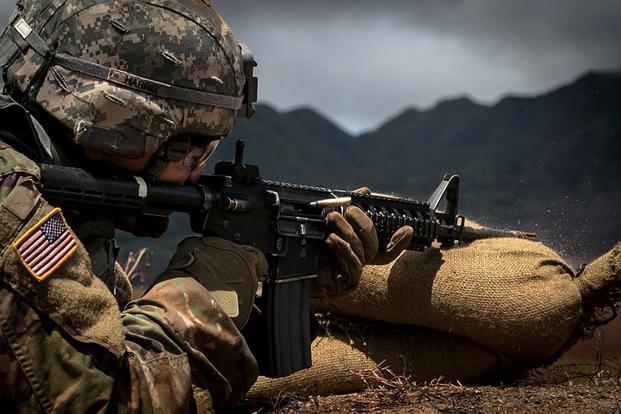U.S. Army weapons officials recently sent two safety messages to all services updating the functions check and immediate action drill for the M4A1 carbine after a soldier experienced an unexplained, unintended discharge.
The incident occurred in late March at Fort Knox, Kentucky, involving an M4 that had been converted to an M4A1 through the product improvement program, or PIP, according to the safety messages.
"The operator pulled the trigger with the selector switch between the semi and auto detents (outside of detent). The weapon did not fire when the operator pulled the trigger and instead fired when the selector was moved further," according to the messages.
No one was injured in the incident. U.S. Army Tank-automotive and Armaments Command, or TACOM, issued Safety of Use messages in March and April to address the issue.
Once used exclusively by U.S. special operations forces, the M4A1 is now the Army's primary individual weapon. It features a full-automatic setting instead of the burst setting on standard M4s used by other services.
The recent TACOM messages, however, are directed at all M4 and M4A1 carbines as well as all M16A2s, M16A3 and M16A4s in the Pentagon's inventory.
In addition to TACOM, the Army's Armament Research, Development and Engineering Center, or ARDEC, and Project Manager Soldier Weapons are investigating the incident, the messages state.
ARDEC officials are working a detailed fault tree analysis to find the cause. A sample of failed weapons is being disassembled, and a dimensional analysis is ongoing, officials said. Simulation and modeling of weapon components and tolerances are also being conducted, according to the messages.
So far, no single cause has been identified, the messages state.
New Functions Check:
Until a resolution is found, units are required to perform this additional function check on all M4A1 Product Improvement Program converted weapons, message 18-004 states.
PIP-converted weapons will be laser-etched with Xs over the burst setting.
1. Ensure weapon is clear by observing the chamber, the bolt face, and magazine well. The weapon should always be pointed in a safe direction.
2. Charge the weapon, place selector lever on the safe position and pull trigger. The hammer should not drop.
3. Move the selector lever to the semi position, then move the selector to a position between semi and auto, and squeeze the trigger. The hammer should drop when the trigger is squeezed. If the hammer does not drop when the trigger is squeezed, this is a failure. Record this information and continue to the next step.
4. If the hammer does not drop, move the selector in either direction. If the hammer drops without squeezing the trigger, this is a failure. Record this information.
5. Gather information recorded from failures at steps (3) and (4) and segregate the weapon for further investigation. Contact TACOM with the weapon serial number.
6. If the weapon passes steps (3) and (4), the function check is complete.
The additional functions check is to inform Army officials of the extent of this issue and determine the number of weapons affected, the messages state.
All M16 and M4 series rifles and carbines should have this additional function check performed within 10 days or prior to live fire, whichever comes first.
New Immediate Action Drill:
TACOM has modified the traditional immediate action drill known as SPORTS to C-SPORTS, if the weapon does not fire when the trigger is pulled, message 18-005 states.
1. Confirm that the selector is set to semi, auto or burst.
2. Slap upward on the magazine to make sure it is properly seated.
3. Pull the charging handle completely to the rear and hold.
4. Observe for ejection of case or cartridge, and ensure the cartridge or case is ejected and the chamber is clear.
5. Release the charging handle to feed a new round.
6. Tap the forward assist to ensure the bolt is closed.
7. Squeeze the trigger; the weapon should fire.
-- Matthew Cox can be reached at matthew.cox@military.com.










